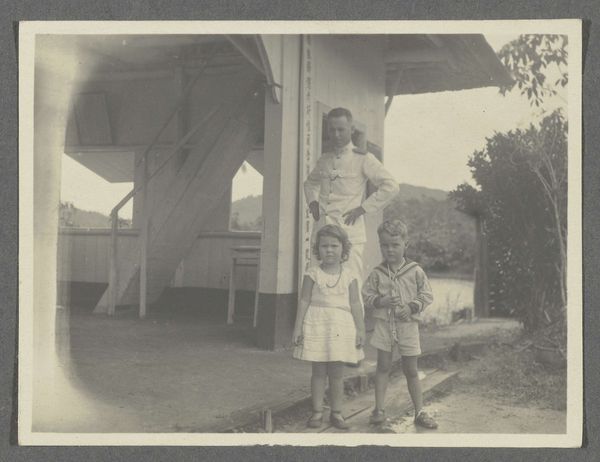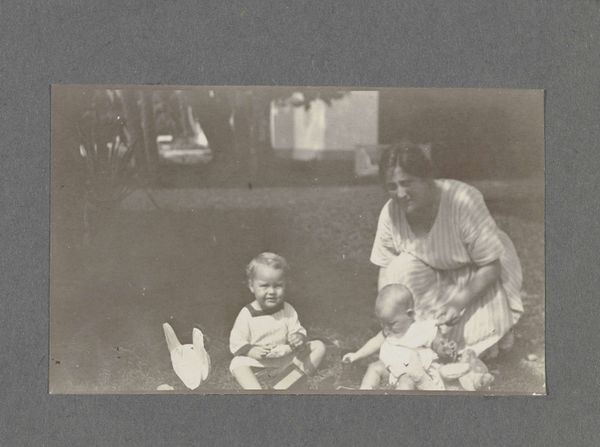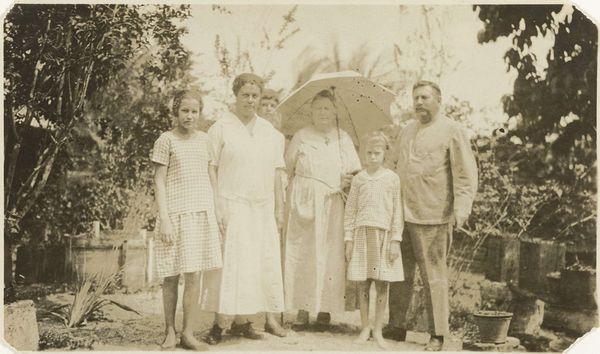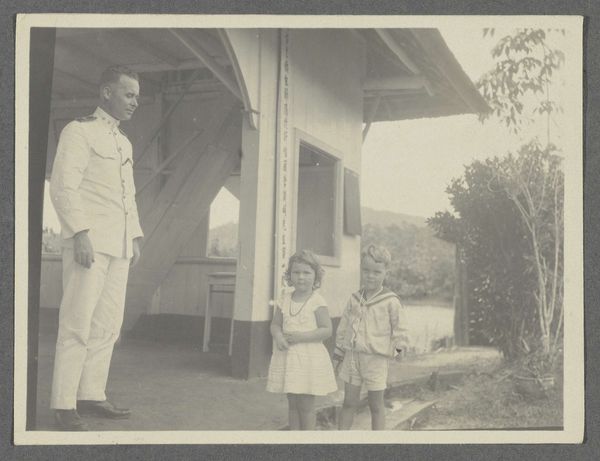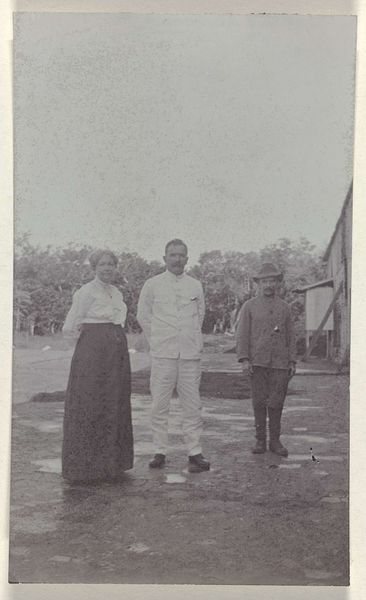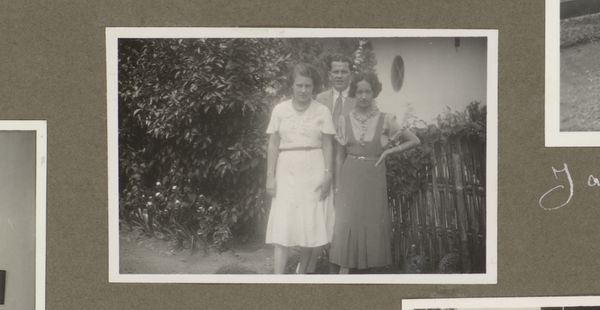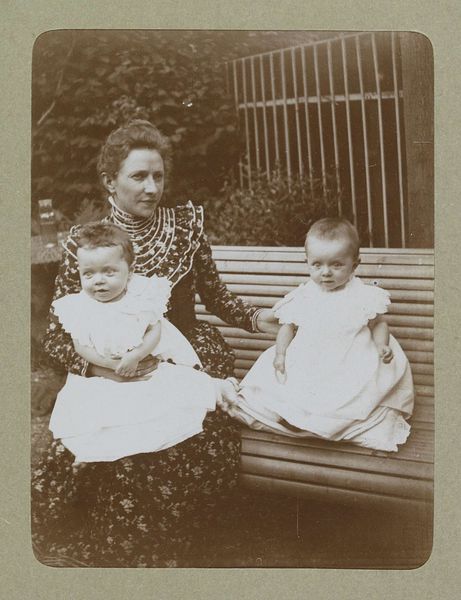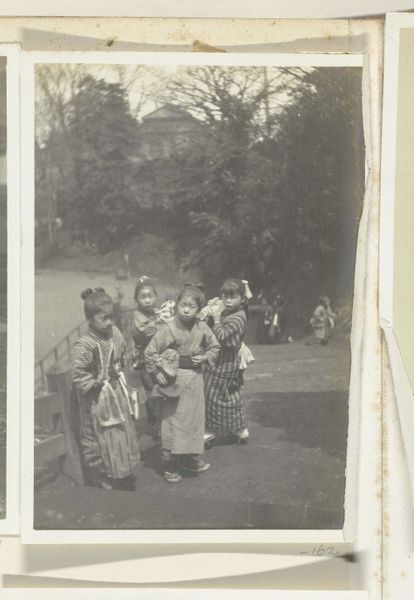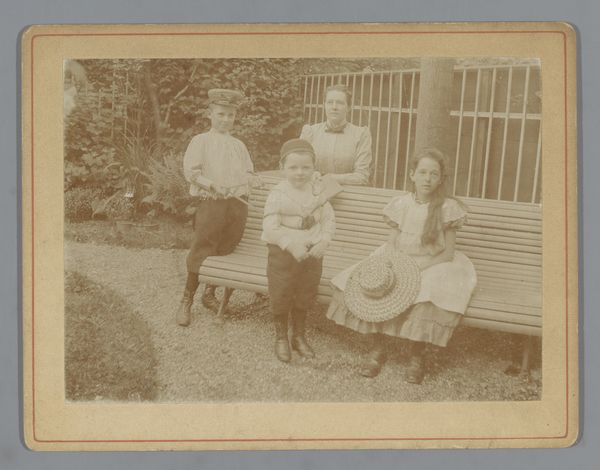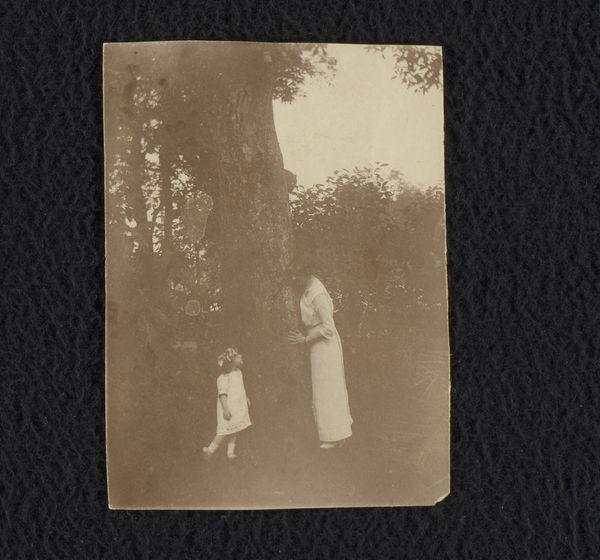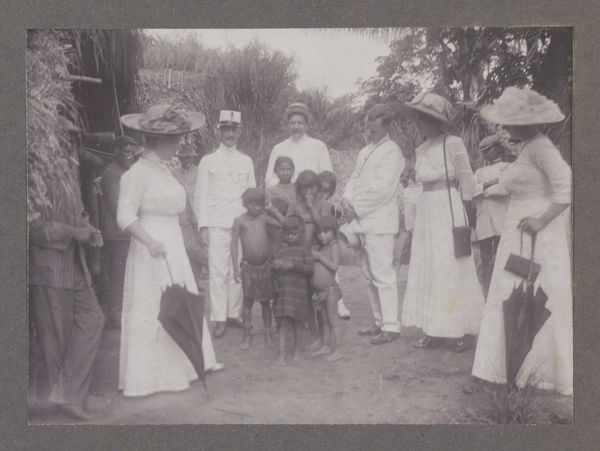
Tine Kleiterp-Vermeulen, haar zoon Klaas (beiden links) en twee onbekende personen op een grindpad in Makassar 1922
0:00
0:00
photography, gelatin-silver-print
#
print photography
#
mother
#
photography
#
group-portraits
#
gelatin-silver-print
#
realism
Dimensions: height 85 mm, width 115 mm
Copyright: Rijks Museum: Open Domain
Curator: Here we have a gelatin-silver print from 1922, titled "Tine Kleiterp-Vermeulen, haar zoon Klaas (beiden links) en twee onbekende personen op een grindpad in Makassar," featuring a group portrait. What is your initial impression? Editor: The overall grayness immediately strikes me—the gravel underfoot, the bleached quality of their dresses. It speaks to the material limitations, but also to the constraints placed on women's labor and their social place within the community. Curator: I note the structural clarity despite the limited tonal range. The positioning of the figures, how their bodies and gaze relate to the implied architecture in the background create a definite compositional tension. The semiotic relationship suggests much. Editor: For me, the key is labor. These white dresses must have been meticulously cared for given the climate of Makassar. What domestic work and colonized labor facilitated this seemingly effortless scene? Curator: Let’s not overlook how the very *making* of such a work participates in empire and colonialism. Silver mined and processed to manufacture the materials and support trade systems of power are literally built into its constitution. Editor: Exactly. The photographic process is never neutral. Colonial power shaped the technology itself and its circulation, dictating whose image would be seen and how, from its initial creation as raw materials to final presentation in an exhibition. Curator: Still, notice how the linear perspective, as rudimentary as it might seem, converges on that small architectural structure in the distance. The photograph utilizes perspective, in conjunction with those compositional factors to draw your gaze deep into the image, giving us some sort of visual agency. Editor: That building could also symbolize the imposing power structure they are within. Looking at it that way helps underscore that any presumed aesthetic agency is constrained. Curator: The beauty lies in the attempt to capture it at all. Editor: The tension is unavoidable. Thinking about production in that context brings everything back to what was required for them just to stand there in front of the camera. Curator: Precisely! Perhaps, considering all, its value lives within that intersection—between aesthetic pursuit and raw physicality—or within its many physical contradictions and what its existence reveals. Editor: It speaks volumes about those absent histories of making and doing under duress, visible even in this simple family photograph.
Comments
No comments
Be the first to comment and join the conversation on the ultimate creative platform.
